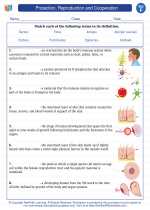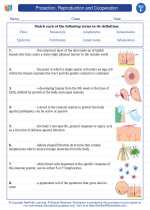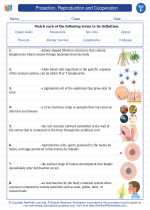Primates
Primates are a diverse order of mammals that includes humans, apes, monkeys, and prosimians. They are known for their complex social behaviors, dexterous hands, and forward-facing eyes.
Characteristics of Primates
- Opposable thumbs: Most primates have opposable thumbs, which allow them to grasp and manipulate objects with precision.
- Stereoscopic vision: Primates have forward-facing eyes that provide depth perception, an important adaptation for life in the trees.
- Large brains: Compared to body size, primates have relatively large brains, which are associated with complex cognitive abilities.
- Complex social structure: Many primates live in social groups with intricate hierarchies and communication systems.
- Dentition: Primates have specialized teeth, including incisors, canines, premolars, and molars, adapted to their omnivorous diet.
Classification of Primates
Primates are divided into three main groups:
- Prosimians: This group includes lemurs, lorises, and tarsiers. They are typically small, nocturnal primates with specialized adaptations for climbing and leaping.
- Monkeys: Monkeys are characterized by their diverse forms and behaviors. They range from arboreal species to ground-dwelling species and are found in various habitats around the world.
- Apes and Humans: This group includes gibbons, orangutans, gorillas, chimpanzees, bonobos, and humans. They are generally larger-bodied primates with complex social structures and advanced cognitive abilities.
Adaptations of Primates
Primates have evolved a range of adaptations that allow them to thrive in diverse environments:
- Arboreal adaptations: Many primates have specialized adaptations for life in the trees, such as grasping hands and feet, long tails for balance, and keen eyesight for navigating through the forest canopy.
- Dietary adaptations: Primates have diverse diets, ranging from fruit and leaves to insects and small animals. Their dentition and digestive systems are adapted to their specific dietary preferences.
- Behavioral adaptations: Primates exhibit complex social behaviors, including grooming, communication through vocalizations and body language, and tool use.
Conservation of Primates
Many primate species are threatened by habitat loss, hunting, and the illegal wildlife trade. Conservation efforts are essential to protect these remarkable creatures and their habitats.
By understanding the biology and behavior of primates, we can contribute to their conservation and ensure their survival for future generations.
.◂Science Worksheets and Study Guides Sixth Grade. Protection, Reproduction and Cooperation
Worksheet/Answer key Protection, Reproduction and Cooperation
Protection, Reproduction and Cooperation  Worksheet/Answer key
Worksheet/Answer key Protection, Reproduction and Cooperation
Protection, Reproduction and Cooperation  Worksheet/Answer key
Worksheet/Answer key Protection, Reproduction and Cooperation
Protection, Reproduction and Cooperation  Vocabulary/Answer key
Vocabulary/Answer key Protection, Reproduction and Cooperation
Protection, Reproduction and Cooperation  Vocabulary/Answer key
Vocabulary/Answer key Protection, Reproduction and Cooperation
Protection, Reproduction and Cooperation  Vocabulary/Answer key
Vocabulary/Answer key Protection, Reproduction and Cooperation
Protection, Reproduction and Cooperation 

 Worksheet/Answer key
Worksheet/Answer key
 Worksheet/Answer key
Worksheet/Answer key
 Vocabulary/Answer key
Vocabulary/Answer key
 Vocabulary/Answer key
Vocabulary/Answer key
 Vocabulary/Answer key
Vocabulary/Answer key

The resources above cover the following skills:
Reading Standards for Literacy in Science and Technical Subjects
Craft and Structure
Determine the meaning of symbols, key terms, and other domain-specific words and phrases as they are used in a specific scientific or technical context relevant to grades 6-8 texts and topics.